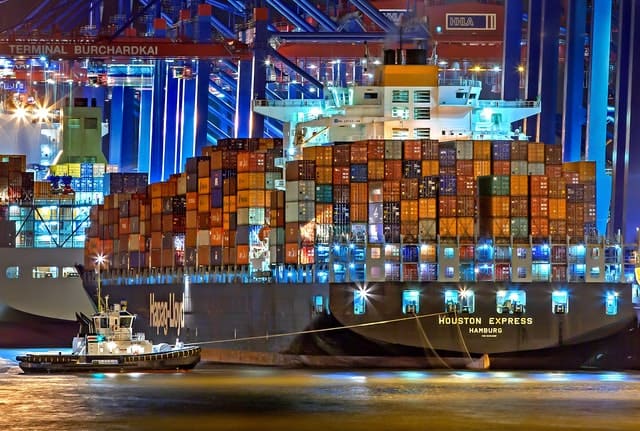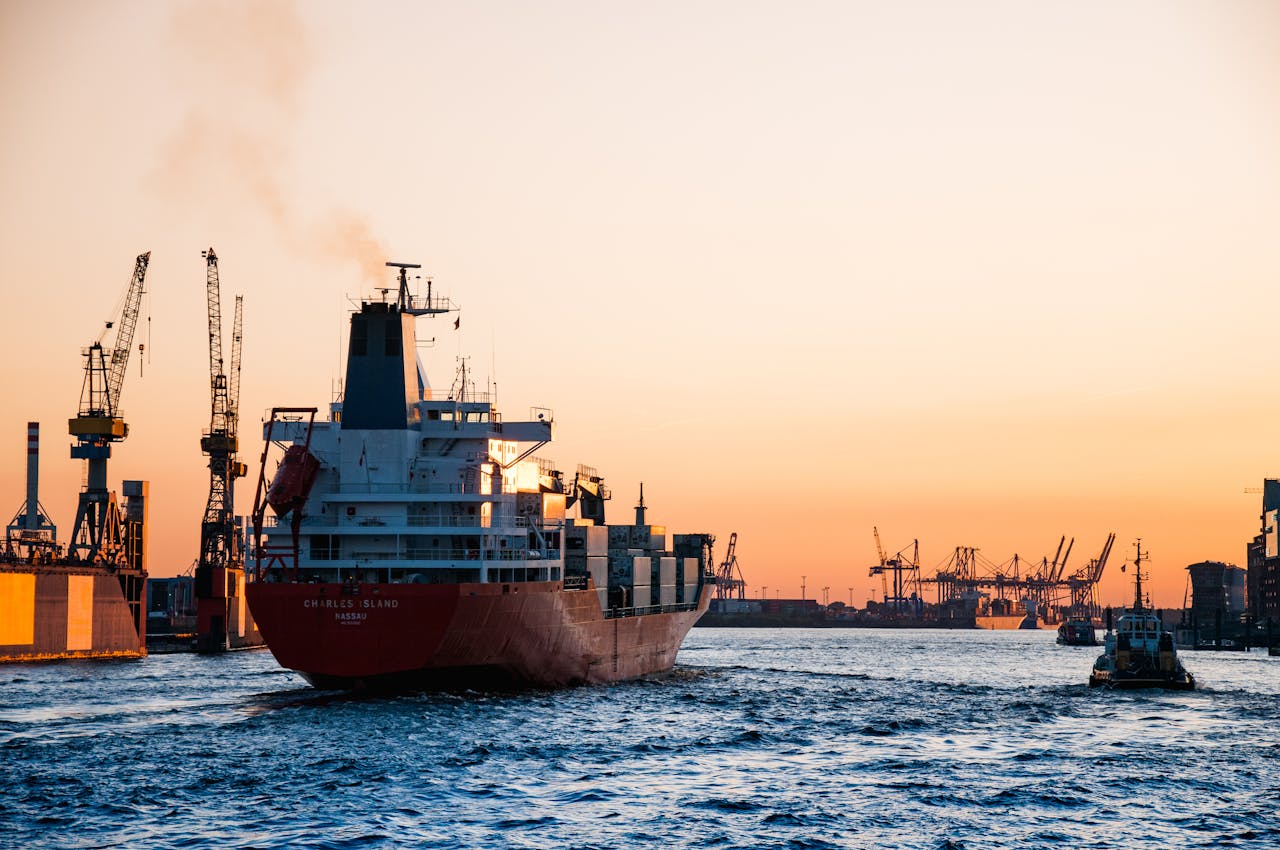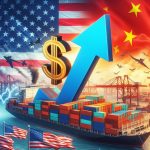Impact of New Tariffs on U.S. Shippers: What You Need to Know
This is a guest post by Eric Laurence.

Trade policies and tariffs significantly impact the global economy, affecting various industries, including shipping. Recent changes in tariffs can profoundly influence U.S. shippers, altering costs, supply chain dynamics, and market competitiveness.
Understanding these implications is crucial for businesses involved in shipping operations. In this article, we delve into the impact of new tariffs on U.S. shippers and provide insights into navigating this evolving landscape.
The Current Tariff Landscape
Tariffs, essentially taxes on imported goods, are used by governments to regulate trade, protect domestic industries, and address economic concerns. Imposing tariffs can lead to price increases for imported goods, disrupt supply chains, and affect consumer behavior.
In recent years, the United States has seen fluctuations in its tariff policies, with changes implemented to address trade imbalances, promote domestic manufacturing, and protect intellectual property rights.
Impact of New Tariffs on Shipping Costs
One of the most immediate effects of new tariffs is the increase in shipping costs for U.S. importers and exporters. Tariffs raise imported goods’ prices, prompting businesses to either absorb the additional fees or pass them on to consumers.
For shippers, this means higher transportation expenses and potential adjustments in pricing strategies to remain competitive in the market. Moreover, uncertainty surrounding tariff changes can lead to volatility in freight rates, making it challenging for shippers to forecast and budget effectively.

Supply Chain Disruptions
Tariffs can disrupt established supply chains, forcing shippers to reassess sourcing strategies and logistics networks. With increased costs and potential trade barriers, businesses may seek alternative suppliers or manufacturing locations to mitigate tariff impacts.
However, transitioning to new suppliers or routes can introduce complexities such as changes in lead times, quality control issues, and logistical challenges. As a result, shippers must carefully evaluate the trade-offs between cost, reliability, and flexibility in their supply chain decisions.
Market Competitiveness
Changes in tariffs can affect U.S. shippers’ competitiveness in domestic and international markets. Higher import costs may make imported goods less attractive to consumers, creating opportunities for domestic producers to gain market share.
Conversely, U.S. exports may face retaliatory tariffs from trading partners, reducing their competitiveness abroad. Shippers must assess the implications of tariff changes on their product pricing, market positioning, and overall business strategy to maintain competitiveness in a changing trade environment.
Diverse Shipping Solutions: Meeting Tariff Challenges
Within international trade and commerce, a diverse array of companies offer shipping solutions to meet the evolving needs of businesses navigating tariff challenges. In international shipping logistics, companies often turn to established providers like Transparent International NYC for their expertise. With a focus on transparency and reliability, they stand out among shipping providers, offering valuable support to businesses in need of shipping services.
While some companies focus on specific regions or modes of transportation, others provide comprehensive end-to-end solutions encompassing warehousing, customs clearance, and distribution. By tapping into the expertise and resources of these shipping providers, businesses can confidently navigate tariff complexities, ensuring the smooth flow of goods across international borders.
Regulatory Compliance
Navigating the regulatory landscape surrounding tariffs requires careful attention to compliance requirements and documentation procedures. Failure to comply with tariff regulations can result in penalties, delays in customs clearance, and disruptions to shipping operations.
Shippers must stay informed about changes in tariff classifications, duty rates, and trade agreements to ensure smooth cross-border transactions. Additionally, investing in technology solutions and leveraging automation can streamline the customs clearance process and enhance regulatory compliance.
Strategies for Mitigating Tariff Impact
Despite the challenges posed by new tariffs, there are strategies that U.S. shippers can adopt to mitigate their impact and maintain operational efficiency. Diversifying sourcing locations and suppliers can reduce reliance on regions subject to high tariffs, spreading risk across multiple markets.
Negotiating with suppliers for price adjustments or exploring alternative transportation modes and routes can also help offset increased shipping costs. Furthermore, investing in supply chain visibility and data analytics enables shippers to identify cost-saving opportunities, optimize routes, and improve inventory management.

Collaboration and Advocacy
Collaboration and advocacy within the industry can amplify the voice of U.S. shippers in shaping trade policies and tariff regulations.
Shippers participate in trade associations, industry forums, and advocacy groups. They collectively address concerns, share best practices, and influence policy decisions.
Engaging with policymakers and stakeholders is essential. It allows shippers to advocate for measures. These measures promote free and fair trade, mitigate tariff barriers, and support a conducive business environment for international commerce.
Economic Outlook and Uncertainty
The impact of new tariffs on U.S. shippers is intertwined with broader economic trends and geopolitical dynamics. Changes in trade policies, currency fluctuations, and global supply chain disruptions can amplify the effects of tariffs on shipping operations.
Moreover, geopolitical tensions and trade disputes between major economies introduce uncertainty into the market, making long-term planning and risk management challenging for shippers. Monitoring economic indicators, geopolitical developments, and regulatory changes is essential for adapting to evolving trade conditions and minimizing business risks.
Leveraging Technology for Streamlined Operations
In addition to partnering with shipping providers, businesses can harness the power of technology to streamline operations and mitigate the impact of tariffs. Advanced logistics platforms and supply chain management software offer real-time visibility into shipment status, inventory levels, and transportation routes. By leveraging data analytics and predictive modeling, companies can optimize shipping routes, minimize transit times, and reduce costs.
Furthermore, automation tools streamline customs documentation processes, ensuring compliance with tariff regulations, and expediting customs clearance. As businesses navigate the complexities of global trade, embracing technology-driven solutions empowers them to adapt to changing tariff landscapes and maintain competitiveness in the market.
Conclusion
In conclusion, the implementation of new tariffs has far-reaching implications for U.S. shippers, affecting costs, supply chain dynamics, and market competitiveness. Navigating this complex landscape requires proactive strategies, regulatory compliance, and collaboration within the industry.
By understanding the impact of new tariffs on shipping operations and adopting appropriate measures, shippers can mitigate risks, seize opportunities, and thrive in a rapidly changing global trade environment. Stay informed, stay adaptable, and remain resilient in the face of tariff-related challenges.
This was a guest post by Eric Laurence.
Author Bio
Meet Eric Laurence, an experienced industry analyst specializing in global trade and logistics. His expertise in writing informative content helps readers grasp the implications of tariff changes on shipping operations and strategic decision-making.
Keyword:
impact of new tariffs





